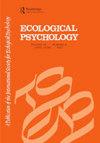A Brief Review on the Application of Lanchester’s Models of Combat in Nonhuman Animals
IF 1.7
3区 心理学
Q3 PSYCHOLOGY, EXPERIMENTAL
引用次数: 12
Abstract
Abstract The Lanchester models of combat were originally created for human warfare. These models were inspired by advances in technology and automatic weaponry at the turn of the 20th century. They parameterize army group size and individual fighting ability to explain the mortality rate of soldiers in a group during battle. In the last few decades, they have been applied to conflicts involving interactions between groups of nonhuman animals of varying degrees of sociality. This review focuses on the predictions and applications of Lanchester laws to nonhuman animal contests. Behavioral researchers have used the Lanchester models to interpret a variety of life history strategies and behaviors, such as colony fission in army ants, size differences in native versus non-native ants, recruitment behavior in chimpanzees, and dominance hierarchies in birds. These researchers assumed that the Lanchester laws apply qualitatively, and sometimes quantitatively, to the specific circumstances studied. To increase their biological realism, mathematical modifications have been proposed. While applications suggest that these laws may explain a multitude of social behaviors, there are surprisingly few empirical tests. Thus, further empirical data are needed to fully assess the accuracy of the models in predicting outcomes in nonhuman animals and their usefulness to biological systems.Lanchester战斗模型在非人类动物中的应用综述
摘要兰彻斯特的作战模型最初是为人类战争而创建的。这些模型的灵感来自20世纪之交技术和自动武器的进步。他们参数化了军队的群体规模和个人战斗能力,以解释战斗中一个群体中士兵的死亡率。在过去的几十年里,它们被应用于不同社会性的非人类动物群体之间的冲突。这篇综述的重点是兰彻斯特定律在非人类动物竞赛中的预测和应用。行为研究人员使用兰彻斯特模型来解释各种生活史策略和行为,如军蚁的群体分裂、本地蚂蚁与非本地蚂蚁的大小差异、黑猩猩的招募行为以及鸟类的优势等级。这些研究人员假设兰彻斯特定律在质量上,有时在数量上适用于所研究的特定情况。为了增强它们的生物学真实性,已经提出了数学修改。虽然应用表明这些定律可以解释许多社会行为,但令人惊讶的是,很少有实证检验。因此,需要进一步的经验数据来充分评估模型在预测非人类动物结果方面的准确性及其对生物系统的有用性。
本文章由计算机程序翻译,如有差异,请以英文原文为准。
求助全文
约1分钟内获得全文
求助全文
来源期刊

Ecological Psychology
PSYCHOLOGY, EXPERIMENTAL-
CiteScore
3.30
自引率
10.50%
发文量
8
期刊介绍:
This unique journal publishes original articles that contribute to the understanding of psychological and behavioral processes as they occur within the ecological constraints of animal-environment systems. It focuses on problems of perception, action, cognition, communication, learning, development, and evolution in all species, to the extent that those problems derive from a consideration of whole animal-environment systems, rather than animals or their environments in isolation from each other. Significant contributions may come from such diverse fields as human experimental psychology, developmental/social psychology, animal behavior, human factors, fine arts, communication, computer science, philosophy, physical education and therapy, speech and hearing, and vision research.
 求助内容:
求助内容: 应助结果提醒方式:
应助结果提醒方式:


